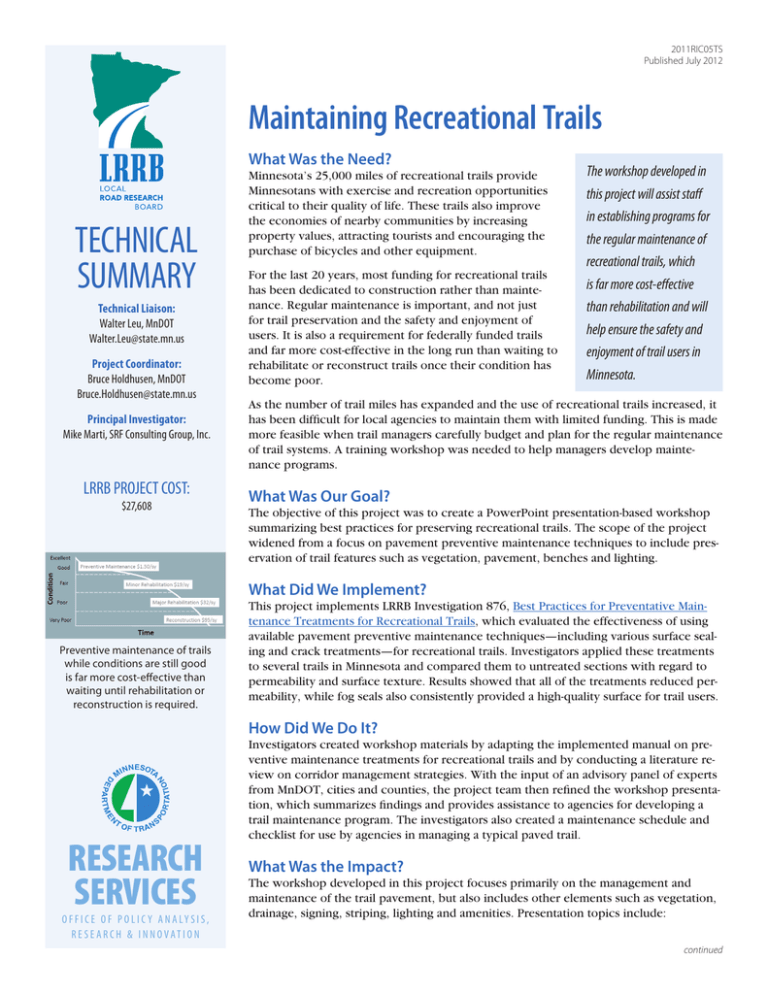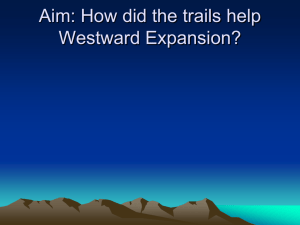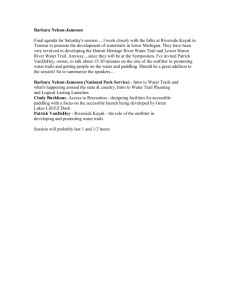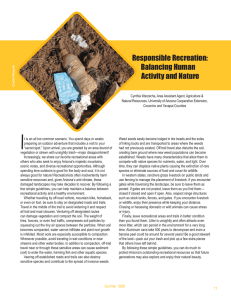Maintaining Recreational Trails What Was the Need?
advertisement

2011RIC05TS Published July 2012 Maintaining Recreational Trails What Was the Need? TECHNICAL SUMMARY Technical Liaison: Walter Leu, MnDOT Walter.Leu@state.mn.us Project Coordinator: Bruce Holdhusen, MnDOT Bruce.Holdhusen@state.mn.us Principal Investigator: Mike Marti, SRF Consulting Group, Inc. LRRB PROJECT COST: $27,608 Minnesota’s 25,000 miles of recreational trails provide Minnesotans with exercise and recreation opportunities critical to their quality of life. These trails also improve the economies of nearby communities by increasing property values, attracting tourists and encouraging the purchase of bicycles and other equipment. For the last 20 years, most funding for recreational trails has been dedicated to construction rather than maintenance. Regular maintenance is important, and not just for trail preservation and the safety and enjoyment of users. It is also a requirement for federally funded trails and far more cost-effective in the long run than waiting to rehabilitate or reconstruct trails once their condition has become poor. The workshop developed in this project will assist staff in establishing programs for the regular maintenance of recreational trails, which is far more cost-effective than rehabilitation and will help ensure the safety and enjoyment of trail users in Minnesota. As the number of trail miles has expanded and the use of recreational trails increased, it has been difficult for local agencies to maintain them with limited funding. This is made more feasible when trail managers carefully budget and plan for the regular maintenance of trail systems. A training workshop was needed to help managers develop maintenance programs. What Was Our Goal? The objective of this project was to create a PowerPoint presentation-based workshop summarizing best practices for preserving recreational trails. The scope of the project widened from a focus on pavement preventive maintenance techniques to include preservation of trail features such as vegetation, pavement, benches and lighting. What Did We Implement? Preventive maintenance of trails while conditions are still good is far more cost-effective than waiting until rehabilitation or reconstruction is required. This project implements LRRB Investigation 876, Best Practices for Preventative Maintenance Treatments for Recreational Trails, which evaluated the effectiveness of using available pavement preventive maintenance techniques—including various surface sealing and crack treatments—for recreational trails. Investigators applied these treatments to several trails in Minnesota and compared them to untreated sections with regard to permeability and surface texture. Results showed that all of the treatments reduced permeability, while fog seals also consistently provided a high-quality surface for trail users. How Did We Do It? RESEARCH SERVICES O F F I C E O F P O L I C Y A N A LY S I S , R E SE A R C H & I N N OVAT I O N Investigators created workshop materials by adapting the implemented manual on preventive maintenance treatments for recreational trails and by conducting a literature review on corridor management strategies. With the input of an advisory panel of experts from MnDOT, cities and counties, the project team then refined the workshop presentation, which summarizes findings and provides assistance to agencies for developing a trail maintenance program. The investigators also created a maintenance schedule and checklist for use by agencies in managing a typical paved trail. What Was the Impact? The workshop developed in this project focuses primarily on the management and maintenance of the trail pavement, but also includes other elements such as vegetation, drainage, signing, striping, lighting and amenities. Presentation topics include: continued “This comprehensive workshop not only will help the staff that maintains trails, but will also assist managers in tracking assets and establishing budgets for trail maintenance.” —Walter Leu, District State Aid Engineer, MnDOT Recreational trails include a variety of elements that require maintenance, including vegetation, signage and the trail pavement itself. “Nationally there is a push to include more trails in transportation infrastructure to accommodate pedestrians and bicyclists. This project will help Minnesota agencies manage the increasing number of these trails.” —Mike Marti, Principal, SRF Consulting Group, Inc. • Operational maintenance activities, including the optimal frequency of various activities such as safety inspections and trash pickup, pavement maintenance, vegetation mowing, trimming and other maintenance, and drainage system repair. Included is an inspection template with a list of inspection items. • Trail pavement management, including information about the pavement life cycle and causes of pavement failure such as damage caused by water and sunlight, traffic and improper construction. Also covered are typical trail pavement failure types and treatments, including cracking and crack sealing; surface deterioration and treatments such as fog sealing, seal coating, slurry sealing, micro surfacing and overlays; and potholes and depressions along with patching. • Asset management, which is helpful in identifying and prioritizing maintenance needs, projecting current and future maintenance costs and making efficient use of resources. This section covers asset management software and data types, such as section identification, construction, maintenance and rehabilitation history, pavement characteristics and pavement conditions. • How to build a trail maintenance schedule, which shows how to build a maintenance schedule based on industry estimates of pavement life spans, trail usage and level of service, and ongoing monitoring. This section also steps the audience through the use of the schedule and checklist created for agency use. What’s Next? In March 2012, investigators presented this workshop in three Minnesota locations via the Minnesota Local Technical Assistance Program. The workshop has also been featured in several articles and presentations, and will be presented at the Fall 2012 American Public Works Association conference and other meetings. Investigators recommend keeping the workshop materials current as new technologies relevant to trail maintenance are introduced. Produced by CTC & Associates for: Minnesota Department of Transportation Research Services MS 330, First Floor 395 John Ireland Blvd. St. Paul, MN 55155-1899 (651) 366-3780 www.research.dot.state.mn.us This Technical Summary pertains to the LRRB-produced Report 2011RIC05, “Maintenance of Recreational Trails,” published November 2011. The full report can be accessed at http://www.lrrb.org/PDF/2011RIC05.pdf. For information about the LTAP course, see http://www.mnltap.umn.edu/training/topic/maintenance/trails. The research being implemented via this project can be found mainly in the LRRB-produced Report 2009-25, “Preventative Maintenance for Recreational Trails,” published July 2009. This report can be accessed at http://www.lrrb.org/PDF/200925.pdf.





